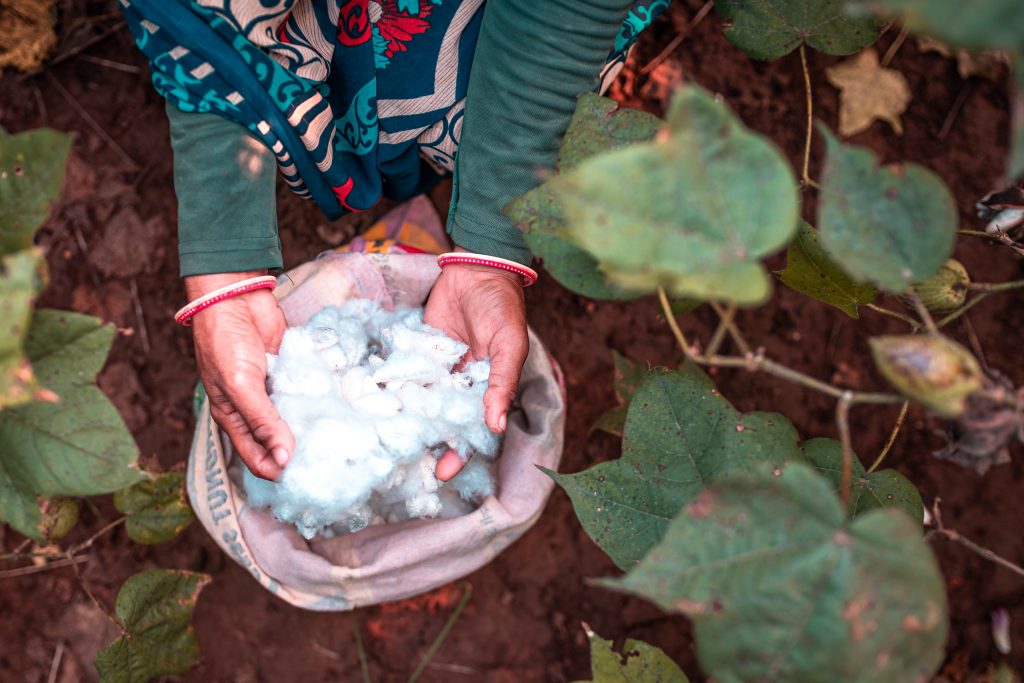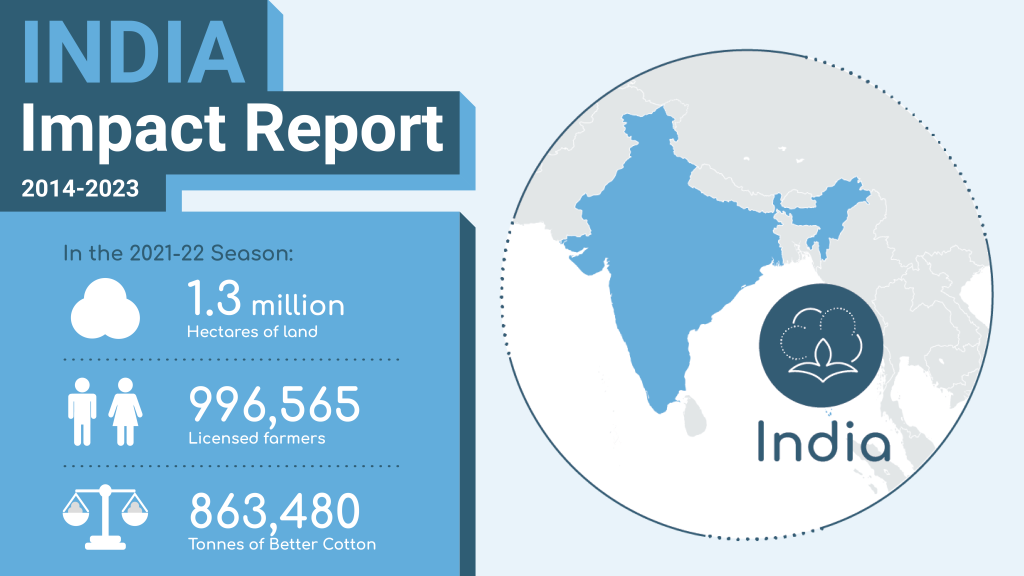
We have today published our 2023 India Impact Report, which highlights significant field-level progress in reducing pesticide and water use, in addition to improvements on farmer livelihoods and equality.
The India Impact Report charts the performance of Indian cotton farmers in the Better Cotton Programme from the 2014/15 season through to the 2021/22 season – exploring the tangible benefits of more sustainable cotton production for both people and the planet.
The report explores a variety of facets of Better Cotton production, from resource utilisation and its impact on farms and the environment, to the makeup of farming communities and their economic outlook.


Since the launch of Better Cotton Programme in India in 2011, the organisation’s network of farmers has expanded from tens of thousands to almost one million.
The report shows a dramatic reduction in the use of pesticides and highly hazardous pesticides (HHPs) by Better Cotton Farmers across India. From the 2014-17 seasons – used as a three-season average – to the 2021/22 season, overall pesticide use reduced by 53% as a result of the adoption of capacity strengthening trainings on an Integrated Pest Management (IPM) and the delivery of effective awareness campaigns.
Specifically, the number of farmers using HHPs was cut from 64% to 10%, whilst those using Monocrotophos – a pesticide classed as highly toxic by the World Health Organization – dropped from 41% to just 2%.
Water usage for irrigation was reduced by 29% between the baseline years and the 2021/22 season. Nitrogen application – which drives greenhouse gas emissions in cotton production when used excessively – decreased by 6% per hectare.
On farmer livelihoods, results indicator data between the 2014-15 to 2021-22 cotton seasons has shown that total costs per hectare (excluding land renting) decreased by 15.6% in 2021-22 compared to the three-season average, driven by expense reductions for land preparation and fertiliser expenses. In 2021, Better Cotton Farmers also had an average cotton lint yield per hectare of 650kg — 200kg per hectare more than the national average.
On women in cotton, meanwhile, there has been an overall increase in the number of women Better Cotton Field Staff across India. In the 2019-20 cotton season, around 10% of Field Facilitators were women, rising to over 25% in the 2022-23 cotton season.
As the organisation turns its focus from expansion to deepening impact, the report serves to celebrate progress and identify development gaps. Part of Better Cotton’s role is to highlight needs for improvement and where continued engagement can make a positive difference for the communities growing cotton in India.
It also represents a departure from the organisation’s past results reporting methodology – through which Better Cotton Farmers were compared with non-Better Cotton Farmers – in that the operations of Better Cotton Farmers are monitored over time to assess year-on-year progress.
Since the first Better Cotton harvest in India in 2011, the country has been a pioneering force within the Better Cotton Programme. We’re buoyed by the results in this Impact Report, which demonstrate the environmental, social and economic benefits of Better Cotton production, and remain committed to driving further improvements at the farm-level.
To read the executive summary and the full report, head to the links below.









































